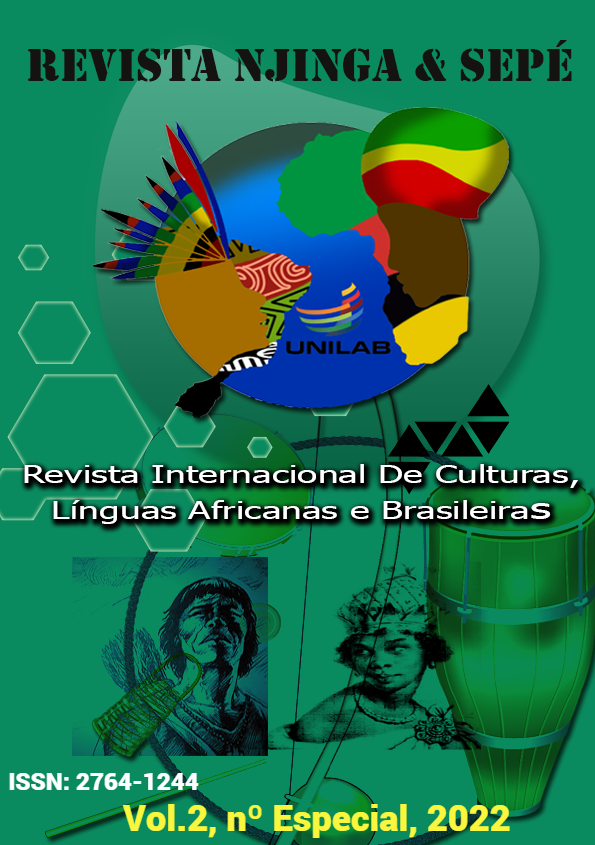DISTANCE EDUCATION IN HIGHER EDUCATION IN MOZAMBIQUE
A CONTRIBUTION TO THE STATE OF THE ART IN TEACHER EDUCATION
Keywords:
Distance Education, Challenges, teachersAbstract
This study presents the topic of distance education (EAD) and its challenges, a teaching model that is evolving in the contemporary era. It aims to describe distance learning and its challenges, as well as the improvements that can be applied. As a research question: What are the challenges and improvements of distance learning? The objective of this bibliographic study is to present the challenges faced by distance learning in Mozambique, the use of information and communication technologies (ICT) and how to overcome the difficulties faced by individuals who wish to receive a quality education. To improve this teaching method, the professionals involved must develop skills and abilities to overcome difficulties and adapt their teaching practices to the real world of students. Another very important factor for the effectiveness of distance learning in Brazil is the participation of the State and society in the teaching process. Comparing the results in a framework allows us to understand that the use of new information and communication technologies (ICTs) facilitates the transformation of learning. An important part of this change has to do with the use of these technologies in distance education (DE), as tools to reach new audiences and develop new teaching methods, alternatives to face-to-face teaching, or explicitly, complementary or integral. parts of teaching. Our main conclusion is that distance education itself brings a revolution in the current educational paradigm, as it offers multiple opportunities for educational institutions at the elementary, secondary and higher education levels to integrate and enrich teaching and learning material. Furthermore, it provides a new way of interaction and communication between teachers and students. To develop the use of ICTs in distance learning in Mozambique, it is necessary to work together to rationalize, plan and continuously work on the available ICT resources.
Keywords: Distance Education, Challenges, teachers.
Downloads
References
Behar, P. (2009). Modelos pedagógicos em educação à distância. Porto Alegre: Artmed,
Bortolozzo, A. R. S. (2009). Quem é e o que faz o professor-tutor. In: IX Congresso Nacional de Educação EDUCERE. Curitiba, 2009. Disponível em:http://www.portugues.seed.pr.gov.br/arquivos/File/ead/ana.pdf . Acesso em: 20 ago. 2022.
Carvalho, A. B. (2007). Os Múltiplos Papéis do Professor em Educação a Distância: Uma Abordagem Centrada na Aprendizagem In: 18° Encontro de Pesquisa Educacional do Norte e Nordeste – EPENN.
Corrêa, J. (2007). Educação à distância: orientações metodológicas. Porto Alegre: Artmed,
Dias, R.A; Leite, L. S. (2010). Educação à distância: da legislação ao pedagógico. Petrópolis: Vozes.
Litto, F; Formiga, M. (2009). Educação à distância: o estado da arte. São Paulo: Pearson Education do Brasil.
Souza, A. R.; Sartori A. S; Roesler, J. (2008). Mediação pedagógica na educação à distância: entre enunciados teóricos e práticas construídas. Revista Diálogo Educativo, Curitiba, vol. 8, nº 24, p. 327-339.
Downloads
Published
How to Cite
Issue
Section
License
Copyright (c) 2022 NJINGA&SEPÉ: Revista Internacional de Culturas, Línguas Africanas e Brasileiras

This work is licensed under a Creative Commons Attribution-NonCommercial-NoDerivatives 4.0 International License.
Authors who publish in this journal agree to the following terms:
Authors maintain copyright and grant the journal the right to first publication, the work being simultaneously licensed under the Creative Commons Attribution License, which allows the sharing of the work with recognition of the authorship of the work and initial publication in this magazine.
Authors are authorized to assume additional contracts separately, for non-exclusive distribution of the version of the work published in this journal (eg, publishing in institutional repository or as a book chapter), with acknowledgment of authorship and initial publication in this journal.
Authors are permitted and encouraged to publish and distribute their work online (eg in institutional repositories or on their personal page) at any point before or during the editorial process, as this can generate productive changes, as well as increase impact and citation of the published work (See The Effect of Open Access).




